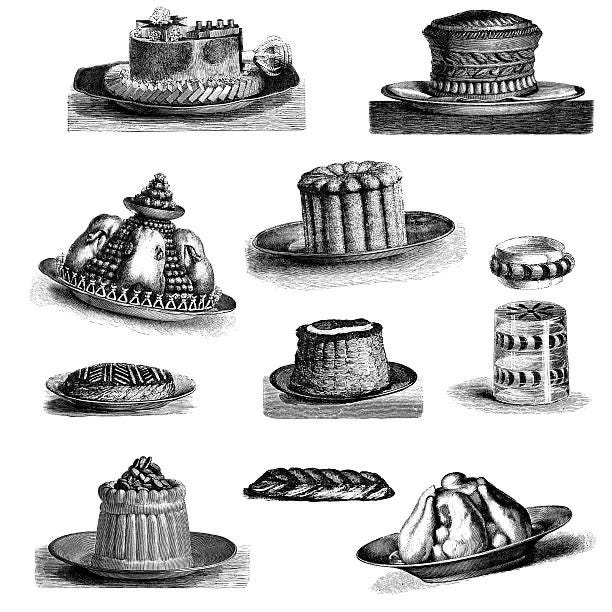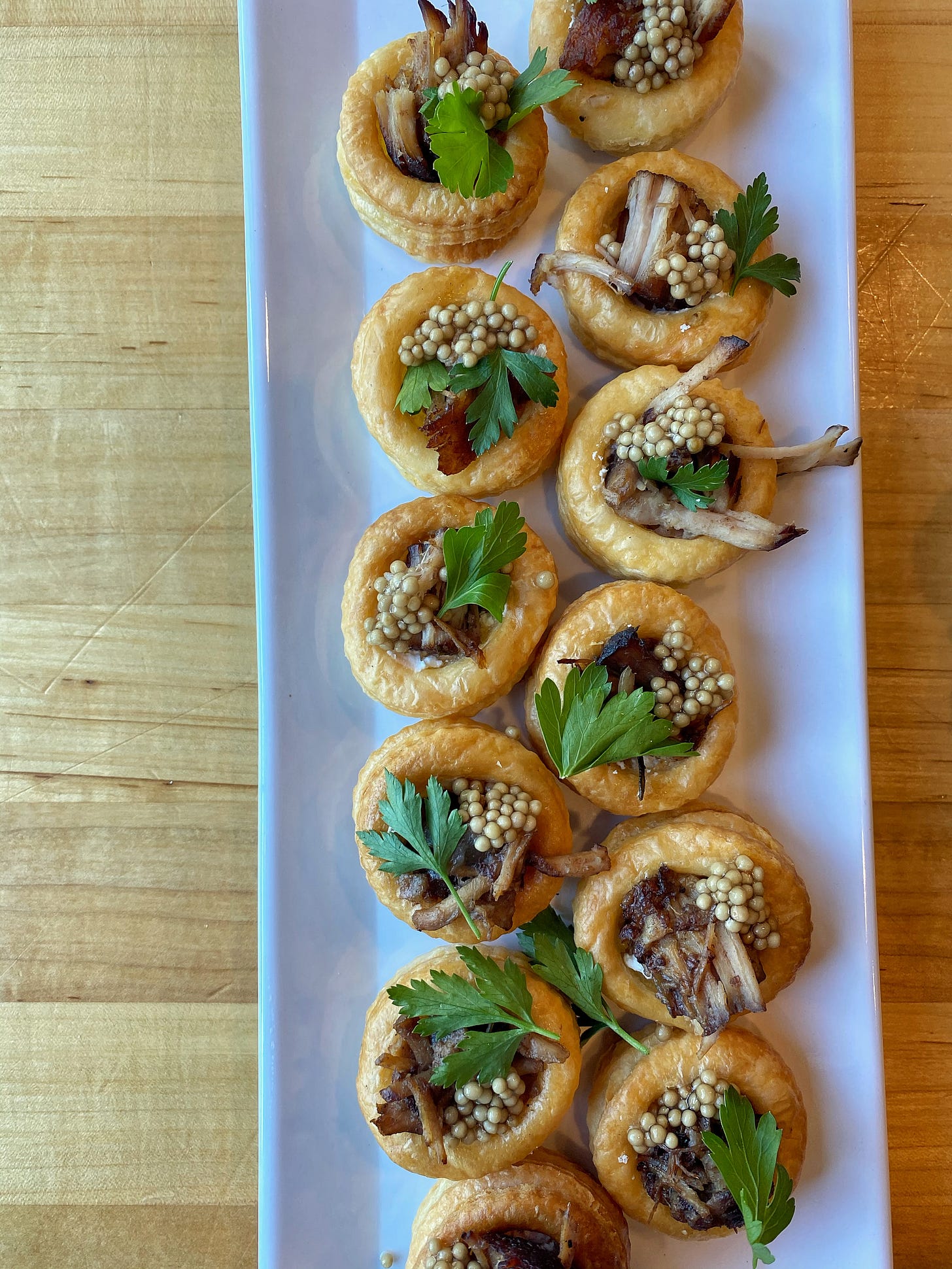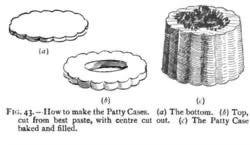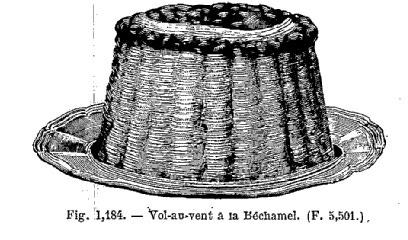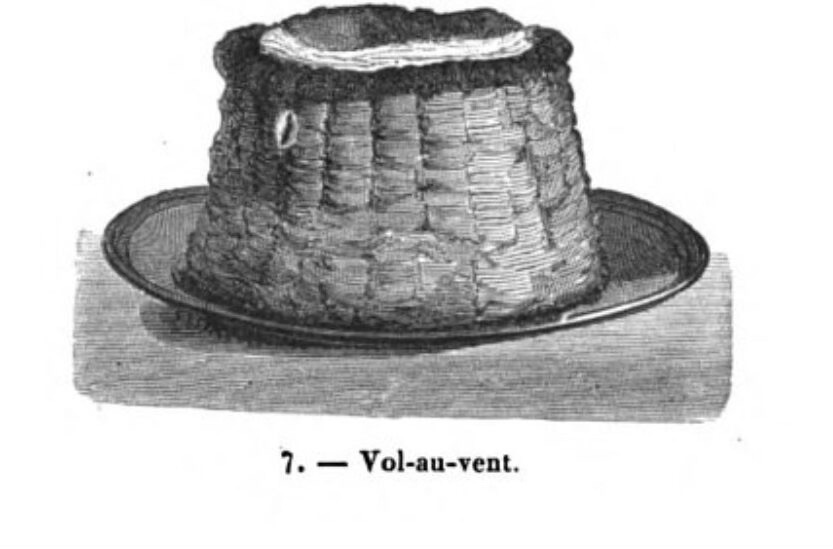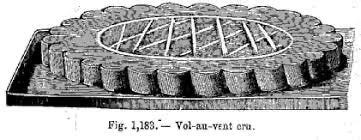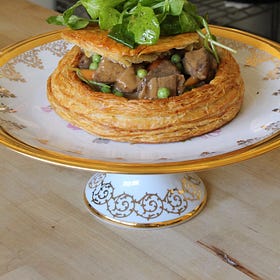“From Palace to Apartment: A Story of Vol-au-Vent”
PART 2 - The history and how Royalty ate this on silver platters. I ate mine standing over the sink in my apartment.
Part II: Vol Au Vent
The French Pastry That Got Me
By Bryan Suarez / @bshnuez
The first time I made vol-au-vent was back in 2020. I read about it in “The Pie Room” by Callum Franklin . Chef Callum is a master of all things savory pastry and is a huge driving force in the modern day category. His work will forever be cherished as he is responsible for carrying the torch and reminding us some things aren’t worth losing. This book is a must-have.
Smaller format. Little golden towers. I stuffed them with smoked ham hock and mustard seeds—salty, sharp, and savory in that way only ham hock knows how to be. At the time, I was just experimenting—trying things, breaking things, seeing what stuck. But that dish left an impression. I didn’t forget it.
So when I came back to it I went full-size this time, stacked tall with beef stew and built with intention—it felt like revisiting an old song and finally learning the words. I wanted to give it the space it deserved. And the story.
Vol-Au-Vent
by Bryan Suarez / @bshnuez
Let’s start with how you say it: vol-oh-VAHN. Whisper it. Like the pastry might shatter if you speak too loud.
It translates to “flight of the wind.” Which feels dramatic, sure—but the French have a gift for naming things the way they feel. And this? This one feels like a breeze that smells like butter.
At its core, a vol-au-vent is a hollow case of puff pastry, stacked high, golden and shattering, designed to be filled with something warm, saucy, and rich. But it’s more than just a pastry. It’s a culinary stage. And like all great stages, it comes with a story.
The Origins: From Royal Kitchens to the Masses
The roots of vol-au-vent stretch back to early 19th century France, during the golden age of culinary theater. While puff pastry itself was already around, it was Marie-Antoine Carême, often called the first celebrity chef, who gets credit for elevating it into something iconic. However, an entremet called petits gâteaux vole au vent is mentioned in François Marin's 1739 cookbook Les Dons de Comus, years before Carême's birth. So we may never know. The lore is real. Very real.
Carême cooked for kings. Literally. He was in Napoleon’s kitchens, and later cooked for European royalty across the continent. The man believed that cooking was architecture, and that dishes should not only taste divine—they should look like temples, pyramids and palaces.
As mentioned earlier, it’s loosely understood that Carême has coined the term vol-au-vent after perfecting the hollow pastry technique: a structure so delicate it could fly away on the wind. They were often filled with chicken in cream sauce, veal sweetbreads, or truffle-laced mushrooms, finished tableside and in the 1800s it was essentially a magic trick.
This wasn’t just food. It was status. If your dinner party had vol-au-vents, people talked. You would have been royalty. In that economy?
A Dish With Layers—Literally and Emotionally
The part I love? Despite its royal pedigree, the vol-au-vent has a surprisingly democratic heart. The shell is just puff pastry. And the filling? That’s up to you.
Over time, this fancy French puff started showing up in more humble homes—stuffed with leftovers, served at holidays, given the “mom touch.” It became adaptable. Nostalgic. A little fancy, a little homemade.
I made one recently filled with beef stew. Braised until tender, with all the love. The kind of filling that feels like a sweater.
It looked like something out of a Parisian cookbook.
But it tasted like home.
Why It Matters Now
In a world of fast food and short attention spans, the vol-au-vent is a beautiful rebellion. It takes time. Technique. Butter. You can’t rush it. But you also don’t need to be fancy to pull it off.
It’s just a pastry that holds warmth.
A vessel for comfort.
A nod to the past, styled for today.
And maybe that’s what cooking is all about.
Taking something old.
Giving it new life.
And sharing it with someone you care about.
What started in royal kitchens made its way to holiday tables, weeknight dinners, and maybe even your stovetop if you're feeling bold. It’s wild to think about—a dish once served to kings. The vol-au-vent went from palaces to my apartment and never lost the plot. It did feel like a big flex eating this.
Thank you for being here.
PART 1 : VOL AU VENT (click here)






